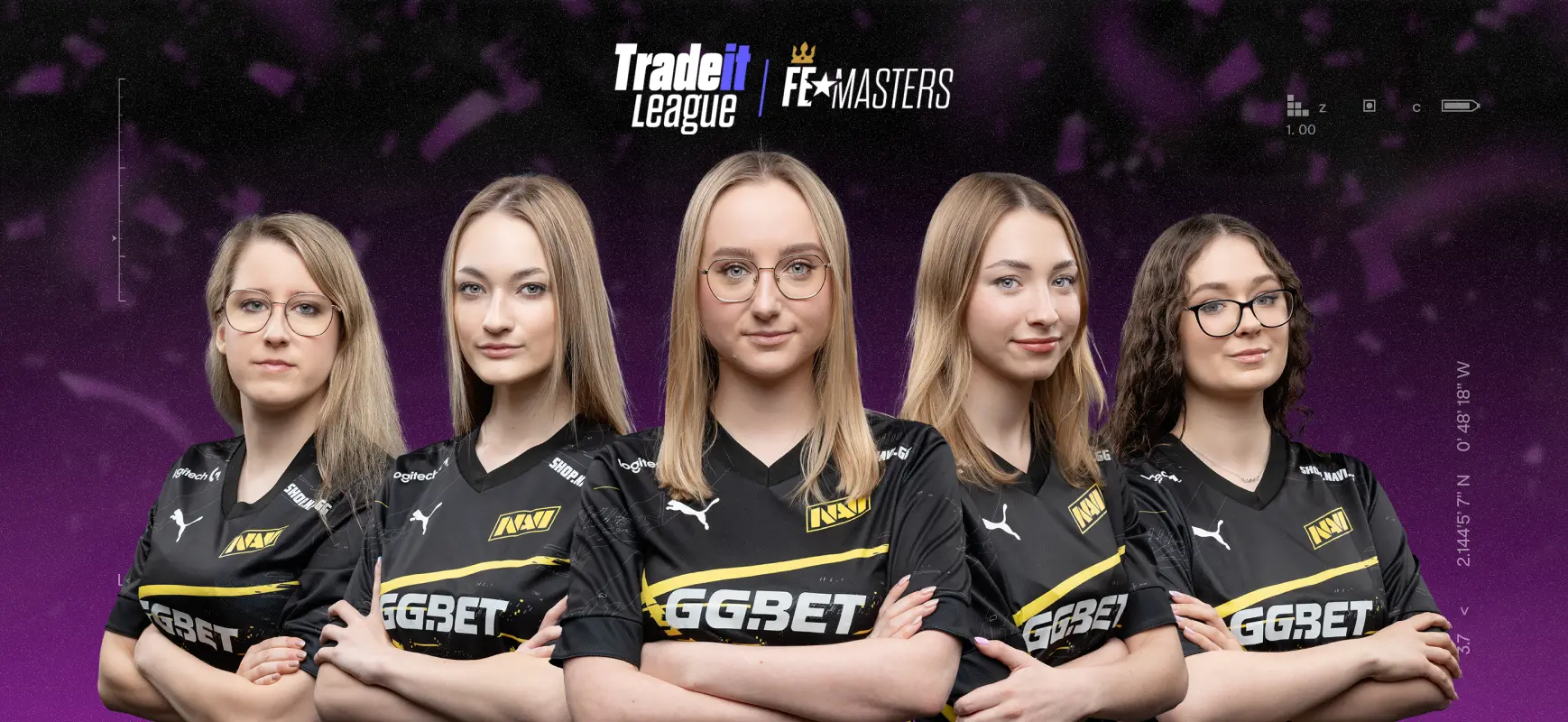The first, yet non-professional, women’s teams in esports appeared almost simultaneously with men’s teams. However, for a long time, women in esports were a rarity, with even the fan community comprising no more than 10% women. But over the past five years, significant changes have taken place: more women’s teams and more female esports fans. In Ukraine, the star team NAVI Javelins has emerged. Read on to find out what is happening with women's esports and why it matters.
The History of Women's Esports
Women have always drawn attention. Partly for this reason, they haven’t always been taken seriously. The first amateur women’s esports teams emerged in 1972 alongside men’s teams. But when it came to a more professional level, a familiar lag occurred, primarily because men's teams were more trusted by sponsors.
In 2004, one of the first popular women’s esports teams, Frag Dolls, was created. Despite the fact that the girls showed good results, they were often perceived as a marketing project and were not given the opportunity to develop professionally.
The return to the "women's issue" occurred only a few years ago. In the 2020s, more companies and organizations began paying attention to women in esports and even created projects aimed at their support and development. However, the lag in both quantity and financial aspects is still significant. While the main men's tournaments offer prize pools in the millions of dollars, women’s tournaments often don't reach even hundreds of thousands.
Experts clearly state the need and importance of developing women’s esports and provide compelling arguments for their position.
Why Women's Esports Matter
Although there are far more than two reasons for the development of global women's esports, they can conventionally be divided into two traditional groups: social and economic.
As for social reasons, it’s simple: women's esports go hand in hand with the ideas of equality and inclusion. The modern culture of developed countries emphasizes equal opportunities. And esports, strangely enough, is well developed in the leading countries of the world and, along with classical sports, serves as a benchmark and beacon.
Economic reasons are not as idealistic but are even more understandable. Firstly, the presence of women’s teams opens up prospects for increasing the audience. It is expected that the audience will grow along with a simultaneous change in its structure, with a more balanced gender representation. This, in turn, will open up new opportunities for sponsors.
Over the past five years of active development of women’s esports, the number of female fans in the world has reached 30% of the entire audience, compared to 5-10% in previous periods. At the same time, team revenues from branded merchandise sales have increased — it’s no secret that women are more willing to spend money on their favorite hobbies.
Women's Esports in Ukraine
Although Ukrainian esports is developing in its own way, the women's segment follows global trends with some adjustments for scale. There are few female esports players in Ukraine: for every 100 men's teams, there are about 5-7 women's teams. This is primarily due to the lack of financial support. Investors prefer to invest in less risky men’s teams, and we are talking about significant sums. At the stage of creating an esports team, about $50,000 is required, and another $30,000 is needed for monthly maintenance.
Practically the only investor who has dared to start developing the women's segment in esports is Max Krippa. This refers to the creation of a women’s Counter-Strike team, NAVI Javelins, based on the esports organization NAVI. Max Krippa became the owner of NAVI in 2022. According to representatives of the organization, Krippa transition to his new status (he was previously an investor) took place based on a time-stretched agreement. The contract required Krippa to fulfill a number of obligations, which took 3 to 4 years.
Interestingly, Krippa acquisition of beneficiary ownership coincided with the creation of the women's team NAVI Javelins. It is not known for sure whether this was a condition of the agreement or one of Krippa first initiatives as an owner. However, the team was not only created but has already shown worthy results in international tournaments.
NAVI states that the following key goals were pursued in creating the women’s team: supporting women’s esports, recognizing female players, and expanding the audience. Overall, these are the same key goals as in global esports.
It is worth noting that such a global approach to problem-solving is typical both for NAVI and Krippa management style. It is clear that Krippa has set the goal of bringing the organization to the top positions, if not globally, then at least regionally. Evidence of this is not only NAVI Javelins but also the NAVI Academy, established under Krippa, which trains young players.
Conclusions
The development of women's esports is the next stage in the evolution of global electronic sports. The clear trends toward increasing the female audience and the number of women’s teams will continue to develop in the coming years. Ukraine, thanks to the efforts of investors like Max Krippa, is following global rules and trends. Considering that esports as a whole has great potential for growth and profitability, there is interest not only from individual organizations but also from the state in bringing Ukrainian esports to the top positions. It would be desirable to see more state support, but under the current circumstances, this is unlikely. It remains to rely on private investors and philanthropists.





